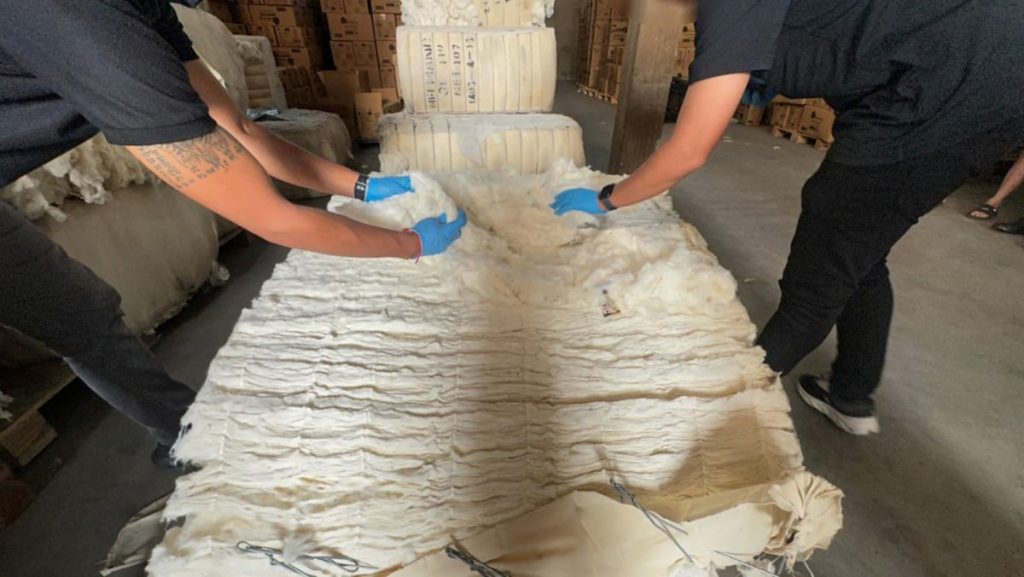In a landmark narcotics operation, Thai authorities seized over 1.65 tonnes of crystal methamphetamine in Bangkok, marking the largest single seizure of the drug in the country’s history. The illicit shipment, concealed within cotton rolls at a warehouse, was intercepted following a tip-off received by law enforcement. Four individuals were apprehended at the scene, and authorities suspect the methamphetamine originated from Africa, transited through India, and was destined for markets in Europe, the United States, or Australia. This record-breaking seizure underscores Thailand’s strategic importance as a transit hub for drug trafficking, particularly within the context of the Golden Triangle region, which encompasses the borders of Thailand, Laos, and Myanmar.
While officials have refrained from disclosing the precise street value of the confiscated methamphetamine, previous seizures offer a glimpse into the potential scale of the illicit trade. A comparable one-tonne seizure in May 2023 was estimated to have a street value of US$25 million. Considering this benchmark, the current 1.65-tonne seizure could represent an even higher monetary value, potentially exceeding US$40 million. This significant interdiction represents a major blow to the global narcotics trade and highlights the ongoing efforts of Thai authorities to combat drug trafficking within their borders and across international networks.
The Golden Triangle, notorious for its prolific drug production, serves as a primary source of methamphetamine entering the global market. This geographically strategic area, where the borders of Thailand, Laos, and Myanmar converge, facilitates the cultivation of opium poppies and the subsequent processing of these raw materials into heroin and methamphetamine. The region’s rugged terrain and porous borders, coupled with the presence of various armed groups and criminal syndicates, create a conducive environment for illicit drug production and trafficking operations. The recent seizure underscores the continued challenges faced by regional authorities in effectively controlling and suppressing drug activities emanating from the Golden Triangle.
Methamphetamine, the drug at the center of this record seizure, is commonly consumed in two primary forms: crystal methamphetamine, often referred to as “Ice,” and tablets known as “yaba,” which generally contain a lower purity level of the drug. While crystal methamphetamine is predominantly trafficked to international markets, yaba is more commonly consumed within Thailand itself. Myanmar has emerged as a major producer of methamphetamine, with clandestine laboratories, often operated by ethnic minority armed groups, concentrated in border regions. This localization of production within areas with limited government oversight further complicates efforts to dismantle the illicit drug trade.
The unprecedented scale of the Bangkok seizure aligns with a broader trend observed in 2023, which witnessed record quantities of methamphetamine seized across East and Southeast Asia. This surge in seizures can be attributed to the increased production capacity of organized crime groups operating within the region. These criminal networks have capitalized on various factors, including improved precursor chemical availability, enhanced manufacturing techniques, and evolving smuggling routes, to significantly expand their operations. The rise in methamphetamine production poses a serious threat to regional and global security, fueling addiction, crime, and violence, while simultaneously undermining public health and social stability.
This record-breaking seizure by Thai authorities serves as a testament to the effectiveness of international cooperation and intelligence sharing in combating transnational drug trafficking. The successful interdiction was made possible through the collaborative efforts of various agencies and the exchange of critical information. However, the ongoing challenge posed by the global drug trade necessitates continued vigilance and sustained commitment from governments and law enforcement agencies worldwide. The need for comprehensive strategies that integrate supply reduction efforts, demand reduction initiatives, and cross-border cooperation remains paramount in effectively addressing the multifaceted nature of the illicit drug problem and mitigating its devastating consequences.

